The unknown world of carnivorous plants
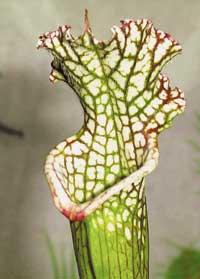
The one who described and drew for the first time a plant of this type was the German Junius Rember Dodoens. In 1554 he described the plant called drosera and described it as medicinal, recommending its use as anti-lung and anti-cough treatment. However, he did not mention his character of carnivore and later Linnaeus did not notice his carnivorous character. Consequently, XIX. Until the early twentieth century, no exhaustive description of carnivores was made. At present, about 600 plant species have been found, distributed in 6 families and 14 genera.
Stressful habitat
Most carnivorous plants live in unnourished wetlands, peatlands, marshes and the like. In these places the concentration of food is very low due to the special conditions they present. Being stagnant waters, the oxygen concentration is very low and the dead organic matter accumulates without rot. If it does not rot, little is renewed.
In addition, water is highly acidified, and microorganisms that should help rot cannot fulfill their function. As a result, the availability of food for plants is considerably reduced and special adaptations are required to obtain food that cannot be taken from the soil. Carnivorous plants have adapted to these difficult and stressful environments and, in addition to photosynthesis, they have come to a rich source of nitrogen and phosphates to enrich their diet: insects.
Spectacular and deadly traps
The plants have numerous systems of insect capture. But in general, depending on the type of trap we can classify the plants in three groups: active, semi-active and passive traps.
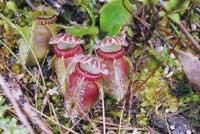
Active traps are the best known because you can see move the plant. These can be of two types: gag type traps and absorption traps. The genres with traps similar to the jaws are two, Dionaea and Aldrovanda. The best known for all is the genus Dionaea. Its trap is shaped like an open shell and all its singing is surrounded by 15-20 long teeth shaped. If the insect enters the interior attracted by the sweet nectar that secretes the plant, it will excite some hairs that are inside the ‘kusku’. The trap will close in 1/30 seconds after these hairs give the ‘kuskua’ closing signal. But the insect will continue to be able to move inside. If still in motion, it will excite the second type of hair and completely close the ‘kuskua’.
It is then when the plant kills the insect and secretes the digestive enzymes to gradually absorb food. By chance, if inside falls something that is not the insect, like a drop of rain or a piece of leaf, the second type of hair will be unexcited and the trap will reopen. It is essential to have two types of hair, since the closing and spreading of the trap means a huge expense for the plant and each one closes and expands up to 5 times. Dionaea is a single species in the genus, which only grows in the North American state of North Carolina and is a protected species.
The genus Aldrovanda is aquatic and is distributed throughout Europe and Asia. It uses the same catch system, but has smaller, numerous traps. Traps require between 1/500 and 1/1000 seconds to close.
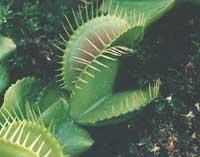
The absorption traps appear in a single genus, the so-called Utricularia. It includes 221 species spread all over the world. All are aquatic plants. Although its capture system is also spectacular, the traps are very small and difficult to observe. The trap has a circular bag shape with an opening –the operculum– along with its cover. When the bag is empty, it adopts the shape of an airless balloon.
If we approach some flea of water to the area of ??the opening, it will excite some throats. These hairs will give the opening signal of the operculum to the trap and when opening it will absorb the water and the one in front. This mechanism is very fast as the bag is filled in 1/500 seconds. Then, in half an hour, it will expel all the water absorbed and begin to digest the prey.
Adhesive sheets Adhesive sheets
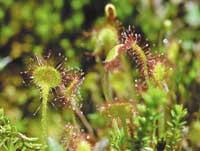
The semi-active traps, as its name indicates, are less fast and spectacular than the previous ones. The traps of these plants are leaves with tentacles soaked with adhesive liquid. If the insects are pruned in these leaves, they remain half adhered and cannot be cleared despite the liberation efforts. To prevent the plant from sticking well to the insect and escaping, the leaf with tentacles inclines towards the side of the animal and in some cases is fully collected. The genres that use this trap are Drosera and Pingüicula.
The traps of some species of the genus Drosera are very sensitive: Contact with a hair of 0,000822 milligrams has shown that the trap is activated. As mentioned at the beginning, it is the first carnivorous plant described and, as its descriptor indicates, it has been used as a drug against asthmatic crises, since it contains a disodic chromoglyate, the anti-inflammatory.
In the case of the genus Pingüicula, on the contrary, the tentacles are less spectacular and at a distance appear normal leaves. Scientists have a characteristic that surprises them: without any nectar, smell or special color, the insect approaches the adhesive leaves and catch the animal with almost all safety.
The genera Byblis and Drosophillum use a system similar to the two genres mentioned. Although its leaves are surrounded by adhesive hairs, they are immovable and do not concentrate around the insect. Therefore, this system is considered a passive trap. The plant will begin to absorb food after the death and decomposition of the insect. In both genera there is one species and the case of Drosopyllum is quite particular, since it is the only carnivore that has adapted to a dry climate. The species is called Drosophyllum lusitanicum and is an endemic species of southwest Spain and Portugal.
Attractive aromas and colors
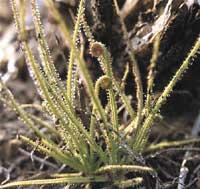
Finally, in English are the so-called pitcher plant, plants with traps in the form of a pitcher. Five genera are included: Darlingtonia, Heliamphora, Sarracenia, Nepenthes and Cephalotus.
The first three have uncovered pitchers. They are of vivid colors and give off nectar of aroma to attract insects. If the insect is posed in the mouth of the jar, the non-slip nectar will cause the animal to fall within. When trying to ascend, the hairs that are directed down will prevent you from escaping. In the end the ‘zopara’ falls inside the jar and drowns in it. This ‘soup’ is composed of rainwater and digestive enzymes and once the insect is digested, the plant will absorb the nutritious ‘soup’.
The jugs of the other two genera are cover. The insect penetrates inside attracted by the nectar and when penetrating it will necessarily touch the cover. In this way, the plant will receive the closing signal of the deck. Some species of the genus Nepenthes can have jugs of 20 cm, and they say that scorpions, birds and small reptiles have also been found.
Digestion is similar in all plants. From the moment the prey is inside the trap, digestive enzymes begin to work. In most cases, the plant itself secretes the enzymes to the trap and absorbs the reaction that occurs in it. In other cases, the presence of microorganisms living in symbiosis with the plant has been detected. Microorganisms help the plant in the digestive process and the plant offers protected accommodation to these microorganisms.
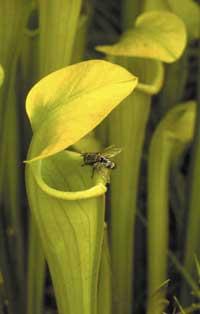
Surprisingly, in some pitcher traps have also been found insect larvae that inhabit the ‘soup’, larvae of the Wyeomyia smithii and Metriocnemus knabi mosquitoes. They still do not know how to protect themselves from the digestive enzymes of the plant.
Besides all the plant genera mentioned, there are other groups with certain characteristics of carnivores. For example, the family of the Bromeliads. The bromelies used as ornamental plants are well known among us. Some tropical species of the same group tend to accumulate water between their leaves, often insects are trapped in them. Although it has been said that they are carnivores, it remains to be clarified whether these insects are capable of digesting. The same applies to some species of orchids. Due to the special structures that present the flowers, or because of them, there are several insects trapped in them. But as no digestion occurs, they are not considered carnivores.
Disappearance of habitat
Habitats like peatlands are decreasing worldwide due to human pressure. Agriculture has been the main cause of the loss of these areas, due to the drought of the wells to obtain new rural lands and the burning of plants in many places. In the United States, for example, 95% of all wetlands have been damaged. For this reason, the species of carnivores that previously abounded are becoming increasingly rare throughout the world.
In addition, for a few years, the fashion of carnivores has been extended to grow at home. A round business for many plant vendors has become a big problem in nature, as many come to peatlands to join them. But the growth of these plants is very complicated. They live in very special conditions of nature and are very sensitive to changes. They require a level of humidity and constant temperature, chlorine-free water and little amount of food.
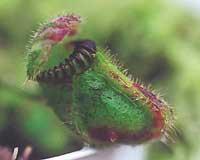
In any case, the conservation of carnivorous plants that can be found in nature goes through the protection of their habitats.
And if you ever pass near a turbine, notice its vegetation, since in the least expected place there can be a carnivorous plant.
Buletina
Bidali zure helbide elektronikoa eta jaso asteroko buletina zure sarrera-ontzian











